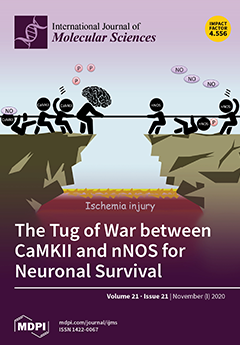CC chemokines, a subfamily of 27 chemotactic cytokines, are a component of intercellular communication, which is crucial for the functioning of the tumor microenvironment. Although many individual chemokines have been well researched, there has been no comprehensive review presenting the role of all
[...] Read more.
CC chemokines, a subfamily of 27 chemotactic cytokines, are a component of intercellular communication, which is crucial for the functioning of the tumor microenvironment. Although many individual chemokines have been well researched, there has been no comprehensive review presenting the role of all known human CC chemokines in the hallmarks of cancer, and this paper aims at filling this gap. The first part of this review discusses the importance of CCL1, CCL3, CCL4, CCL5, CCL18, CCL19, CCL20, CCL21, CCL25, CCL27, and CCL28 in cancer. Here, we discuss the significance of CCL2 (MCP-1), CCL7, CCL8, CCL11, CCL13, CCL14, CCL15, CCL16, CCL17, CCL22, CCL23, CCL24, and CCL26. The presentation of each chemokine includes its physiological function and then the role in tumor, including proliferation, drug resistance, migration, invasion, and organ-specific metastasis of tumor cells, as well as the effects on angiogenesis and lymphangiogenesis. We also discuss the effects of each CC chemokine on the recruitment of cancer-associated cells to the tumor niche (eosinophils, myeloid-derived suppressor cells (MDSC), tumor-associated macrophages (TAM), tumor-associated neutrophils (TAN), regulatory T cells (T
reg)). On the other hand, we also present the anti-cancer properties of CC chemokines, consisting in the recruitment of tumor-infiltrating lymphocytes (TIL).
Full article






